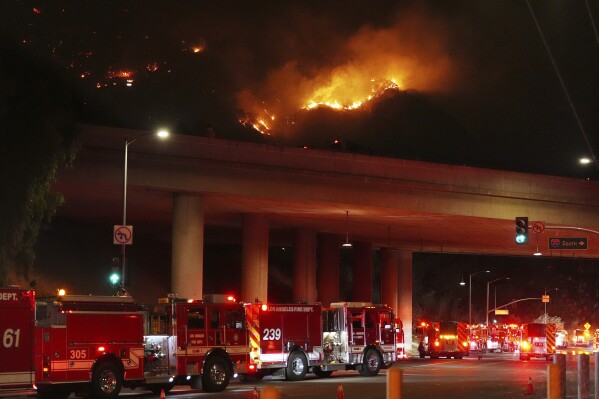Michigan Stadium Engulfed in Massive Fire: Unraveling the Chaos at ‘The Big House’
Ann Arbor, Michigan – A Dark Day for College Football History
A catastrophic fire broke out at Michigan Stadium, widely known as “The Big House,” sending plumes of thick black smoke billowing into the sky and causing widespread panic among locals and University of Michigan football fans. The stadium, which holds the distinction of being the largest in the United States with a seating capacity of over 107,000, became the scene of a shocking disaster as flames rapidly spread through parts of the iconic structure.
Timeline of the Fire Outbreak
According to eyewitnesses and emergency responders, the fire erupted unexpectedly late in the afternoon, engulfing sections of the stadium’s infrastructure. Initial reports indicate that the blaze may have originated in the stadium’s upper deck, potentially in one of the luxury suites or maintenance areas, before quickly spreading to adjacent sections.
At approximately 3:45 PM (ET), security personnel on-site noticed smoke rising from the east side of the stadium. Within minutes, emergency alarms blared as fire crews were dispatched to the scene. By 4:10 PM, a raging inferno had consumed multiple areas, and large portions of the structure appeared compromised. Videos circulating on social media showed flames reaching several stories high, with heavy black smoke visible from miles away.
Firefighters arrived on the scene within 15 minutes of the first emergency call and immediately began efforts to control the blaze. However, the sheer scale of the fire, combined with the stadium’s vast structure, made containment efforts extremely challenging.
Evacuations and Emergency Response
Thankfully, due to the stadium not being in use for a game or large event at the time, mass casualties were avoided. However, stadium maintenance workers, security staff, and a few university personnel were inside when the fire broke out. Emergency responders successfully evacuated everyone, with reports confirming that at least eight individuals sustained injuries, including two in critical condition due to smoke inhalation and burns.
Authorities issued a city-wide alert urging residents to avoid the area as firefighters from multiple departments worked tirelessly to prevent the fire from spreading to nearby buildings. Ann Arbor Fire Chief Michael Reynolds described the situation as “one of the most challenging emergency operations in the city’s history.”
“This is an iconic structure not just for Michigan but for the entire nation,” Reynolds said in a press briefing. “Our top priority is to ensure everyone’s safety while preventing further destruction.”
Possible Causes and Investigation
While the exact cause of the fire remains unknown, early speculations suggest it could have been triggered by an electrical malfunction, a gas leak, or an accidental spark from ongoing stadium maintenance work. Several crews had been working on stadium enhancements, including updates to seating areas and structural reinforcements, prior to the incident.
Investigators from the Ann Arbor Fire Department and the Bureau of Alcohol, Tobacco, Firearms and Explosives (ATF) have been deployed to assess the damage and determine the fire’s origin. Authorities have not ruled out arson, but no official statements have confirmed foul play at this time.
Extent of the Damage
Preliminary assessments indicate that significant portions of the eastern stands and press box area have been severely damaged, while other sections have sustained minor to moderate fire and smoke-related damage. Structural engineers are currently evaluating whether parts of the stadium will need to be demolished and rebuilt.
An official from the University of Michigan Athletics Department described the destruction as “heartbreaking” but assured fans that plans for rebuilding and restoration would commence immediately.
Impact on Michigan Wolverines Football Season
With the college football season approaching, concerns have already begun to rise about whether Michigan Wolverines’ home games will be affected. The first home game of the season, scheduled to take place in just a few weeks, could face postponement or relocation depending on the extent of the repairs needed.
University officials are in discussions with the Big Ten Conference and other nearby stadiums about potential contingency plans, including possibly playing home games at Ford Field in Detroit or Spartan Stadium in East Lansing.
“We are committed to ensuring that Michigan football continues, but we must prioritize safety above all else,” said Michigan Athletic Director Warde Manuel. “We will update fans as soon as we have a clearer picture of the timeline for repairs.”
Fan Reactions and Nationwide Response
News of the fire has sent shockwaves through the sports world, with Michigan fans and alumni expressing their devastation on social media. The stadium, which has been a home for legendary football moments for nearly a century, holds sentimental value for millions.
Former Wolverines football players, including Tom Brady and Charles Woodson, have posted messages of support, urging the university and community to rally together in this difficult time.
“I can’t believe what I’m seeing,” Brady tweeted. “The Big House is more than just a stadium—it’s a symbol of Michigan pride. We’ll get through this together. #GoBlue”
University of Michigan President Santa Ono also released a statement:
“We are deeply saddened by today’s events, but we stand strong as a Michigan family. We are grateful to first responders for their swift actions and will ensure that Michigan Stadium rises again, stronger than ever.”
What’s Next?
As the situation develops, authorities will continue their investigation while assessing the full scale of repairs required. University officials have promised transparency and frequent updates regarding stadium restoration and the football team’s plans.
A press conference is scheduled for tomorrow morning, where fire officials, university representatives, and athletic department leaders are expected to provide more details.
For now, Michigan football fans—and the broader college football community—remain in shock, hoping for a swift recovery and the eventual return of The Big House to its former glory.
Please share.






